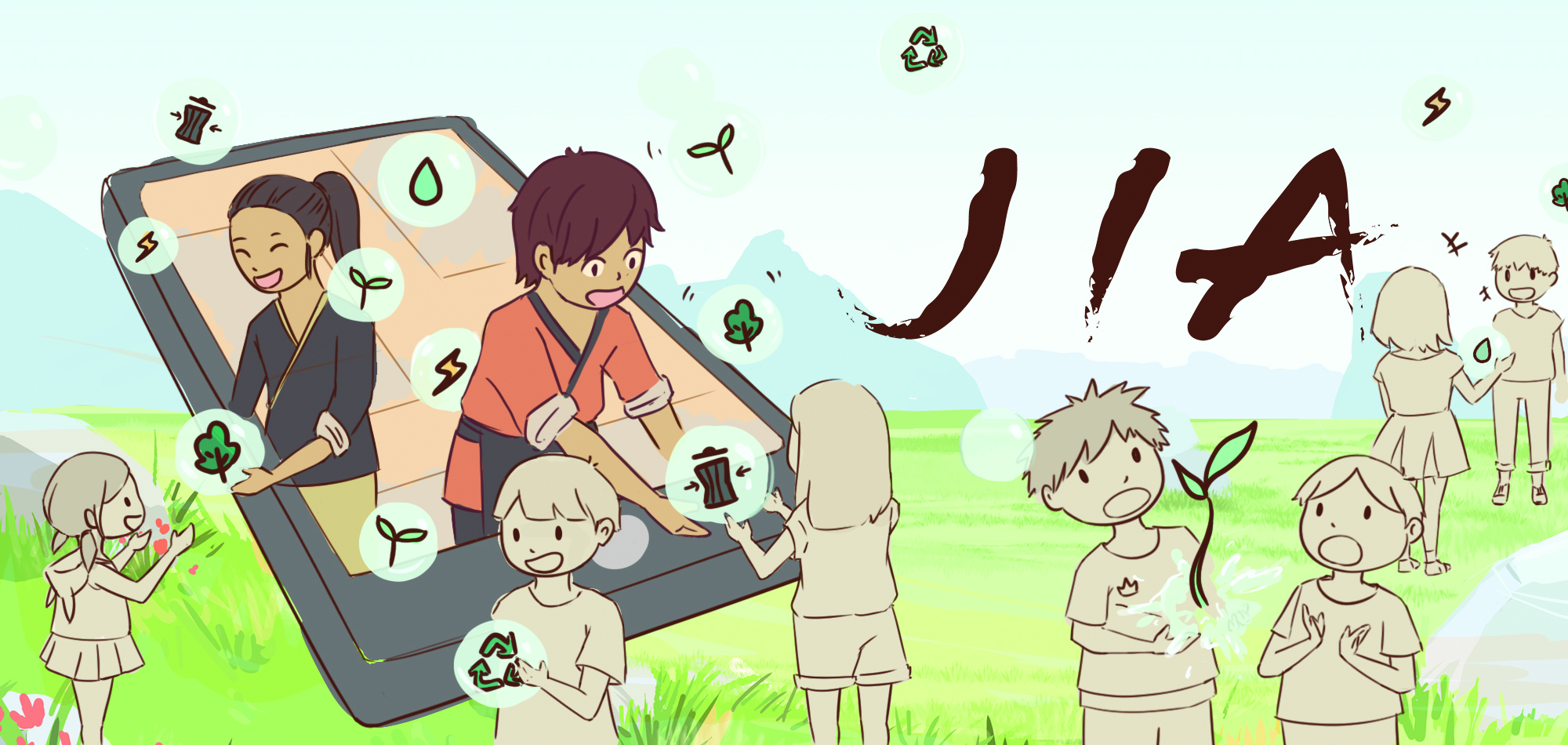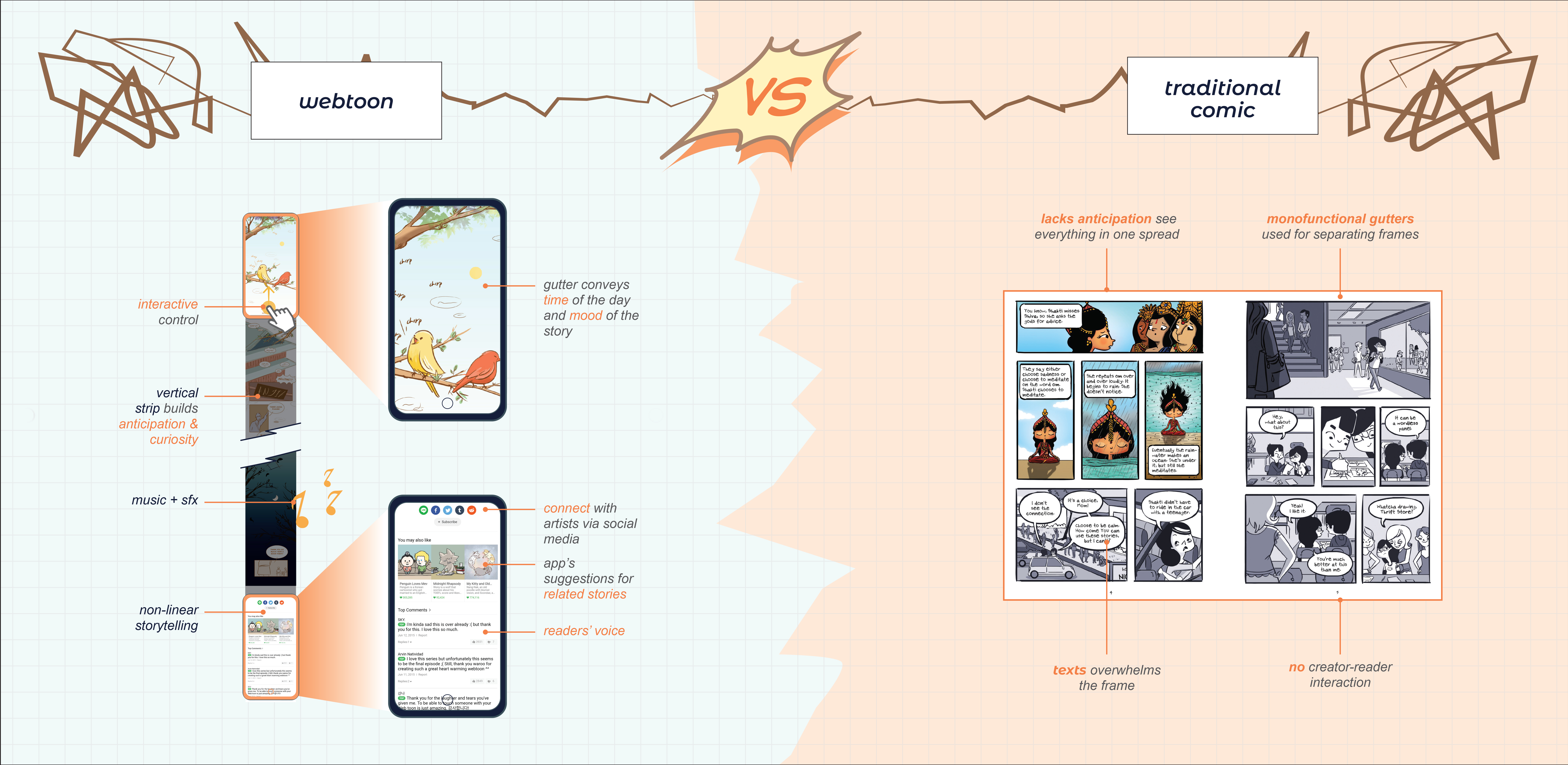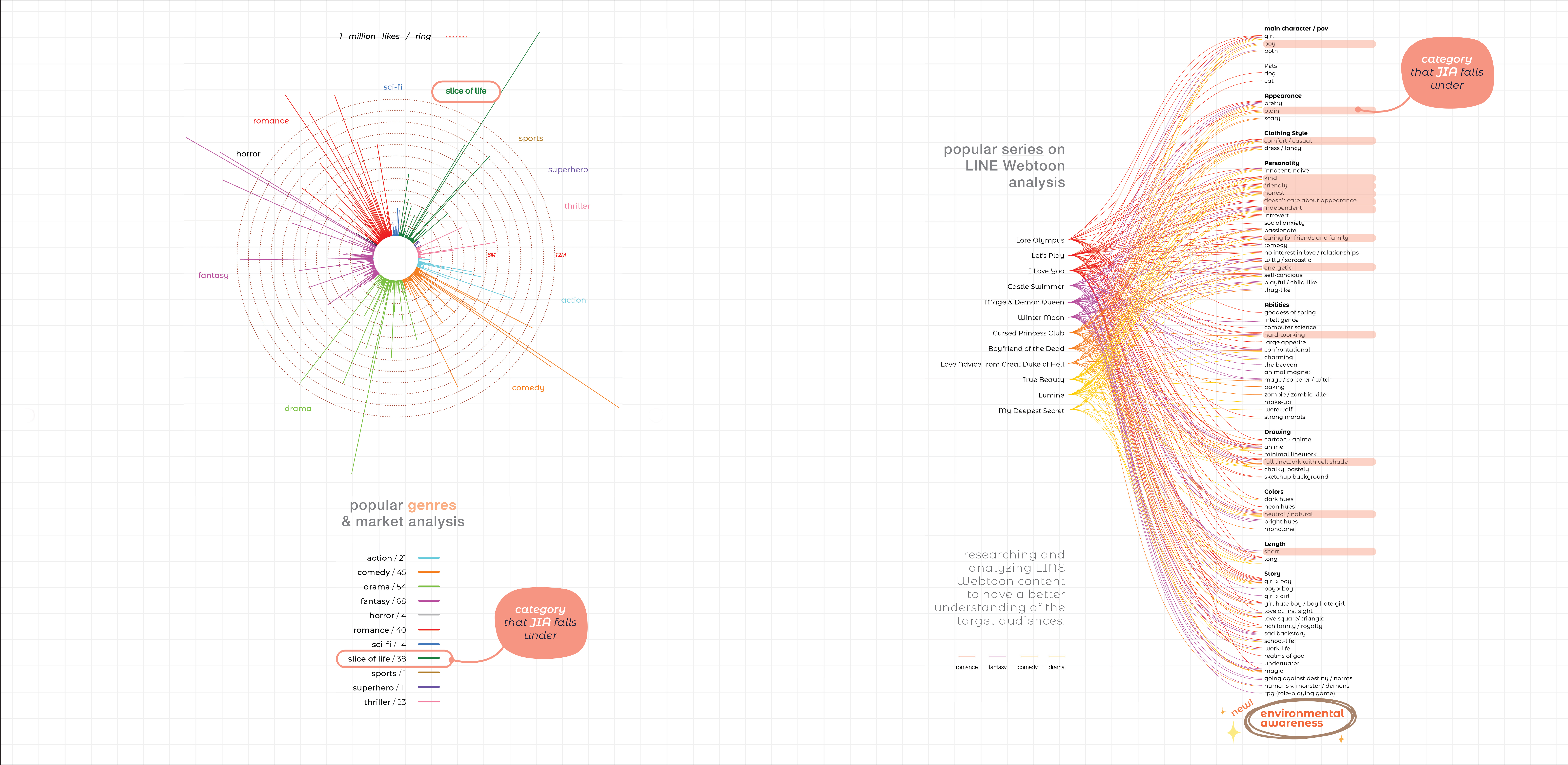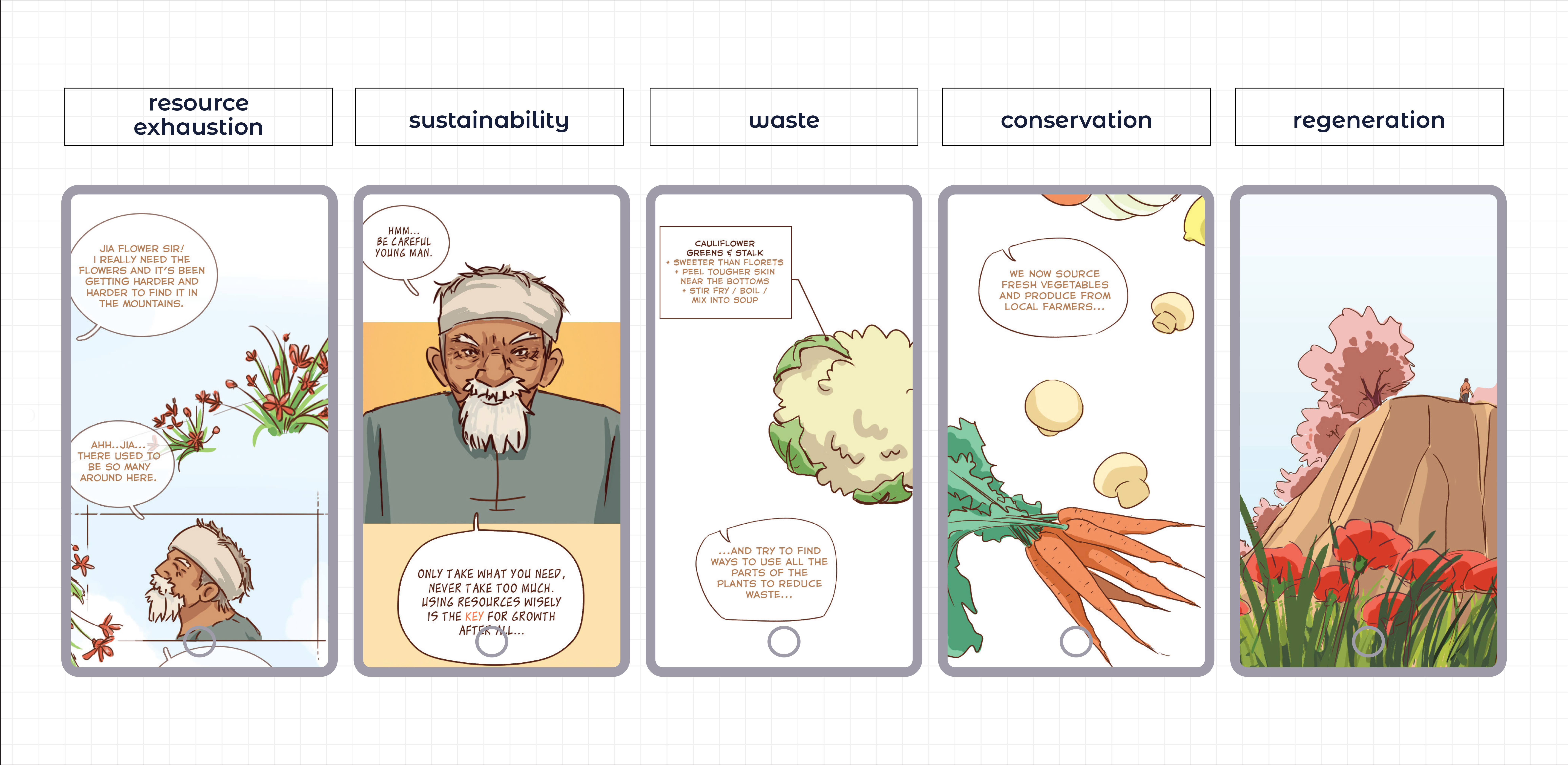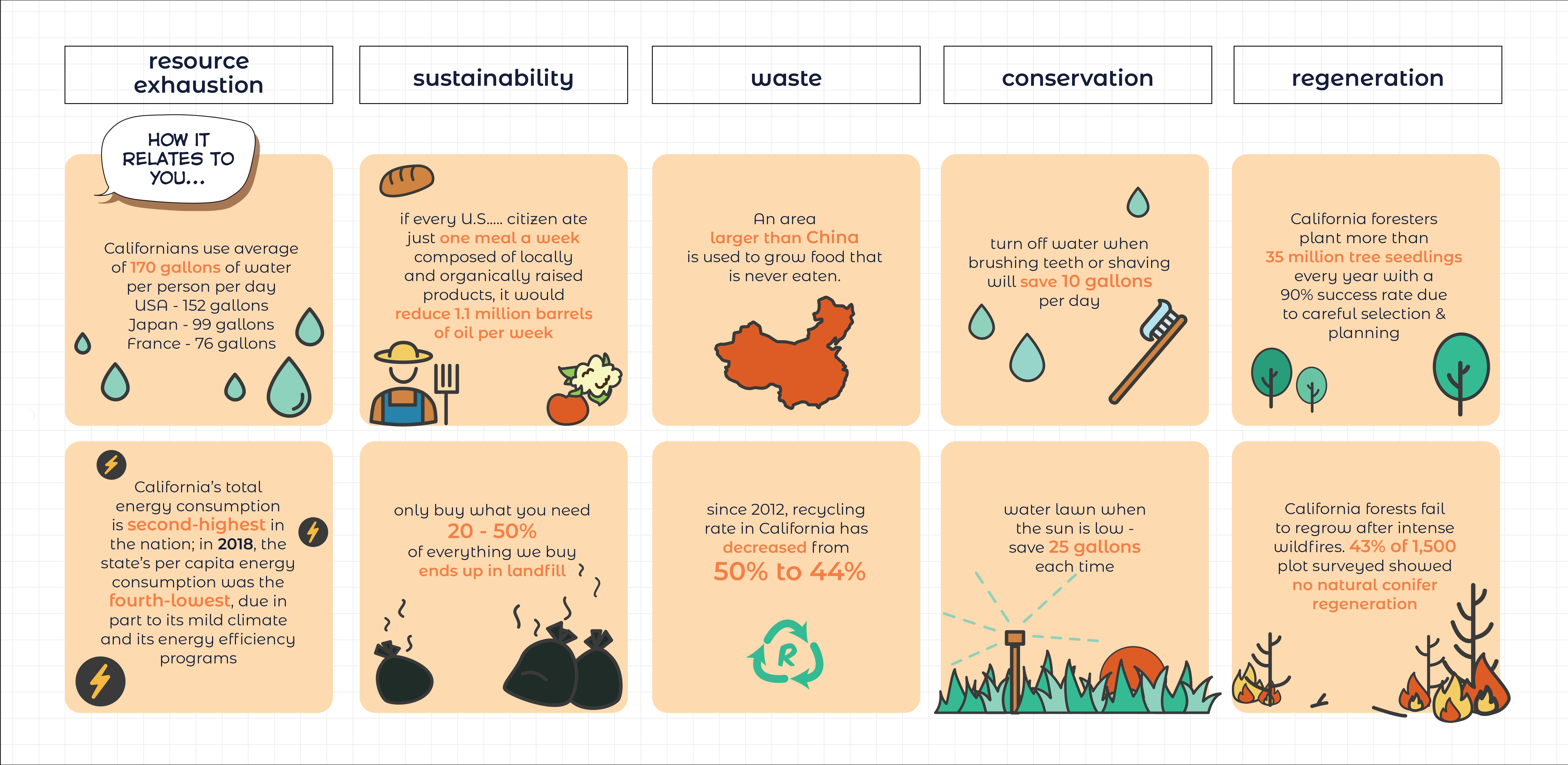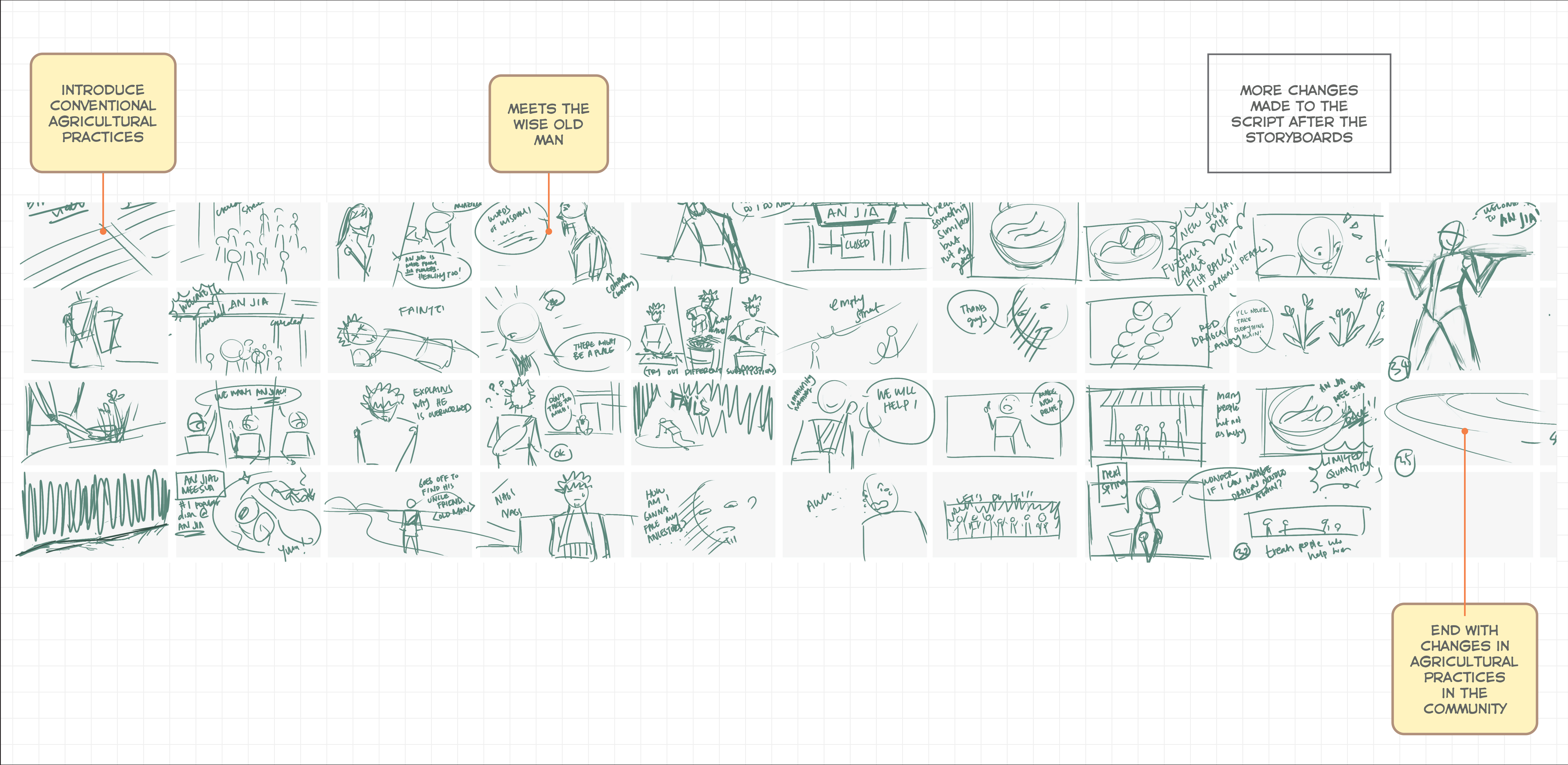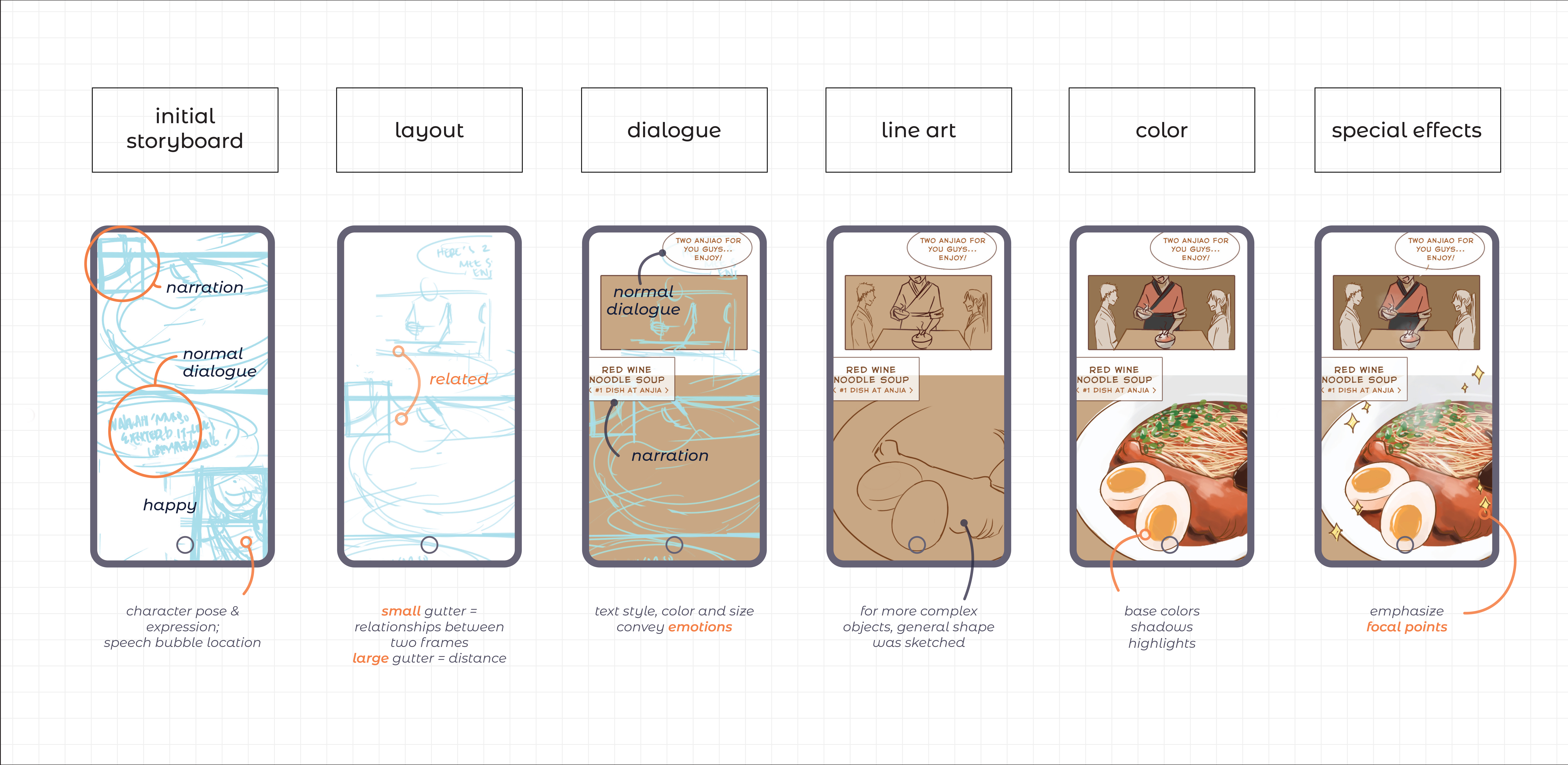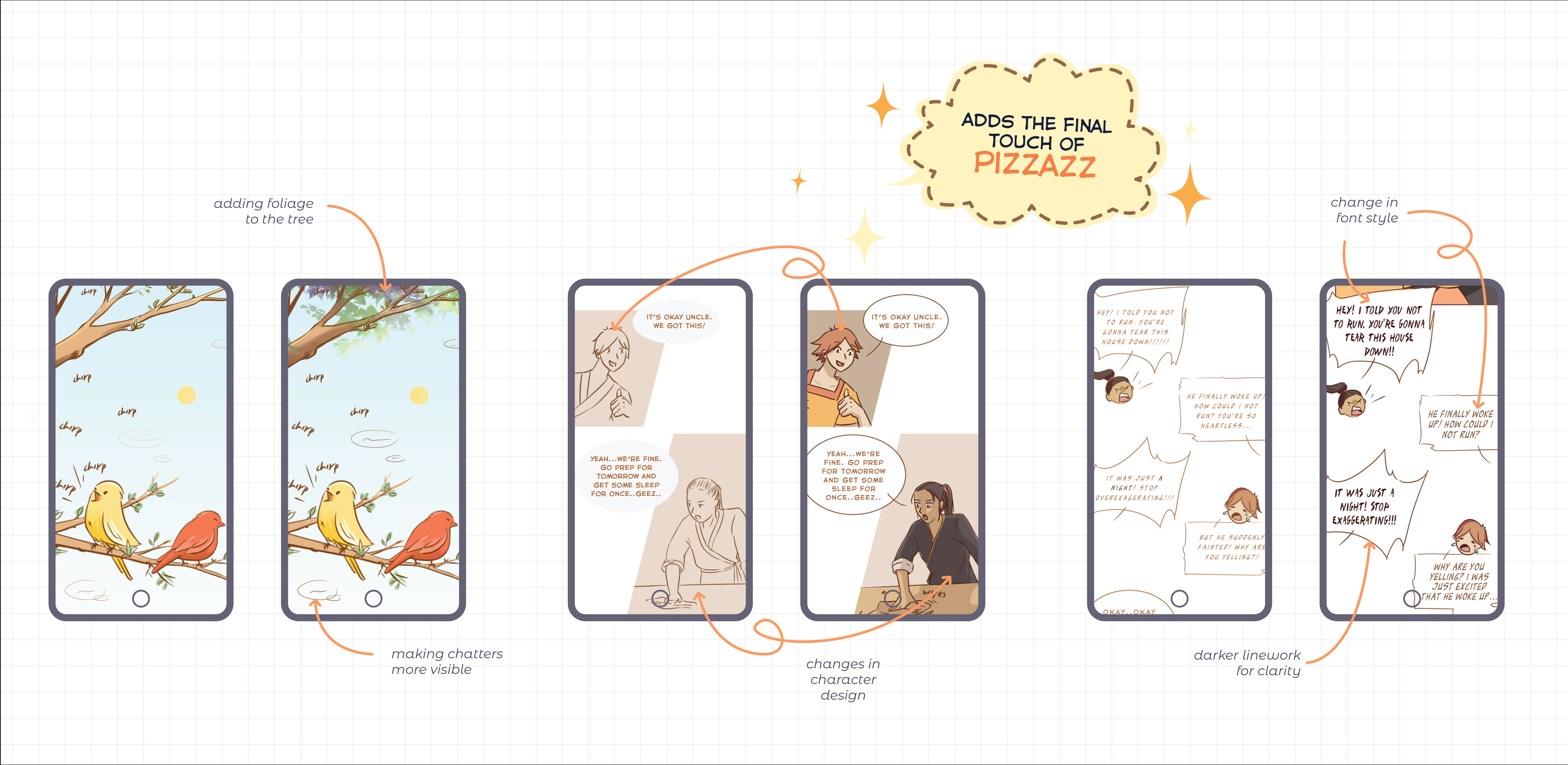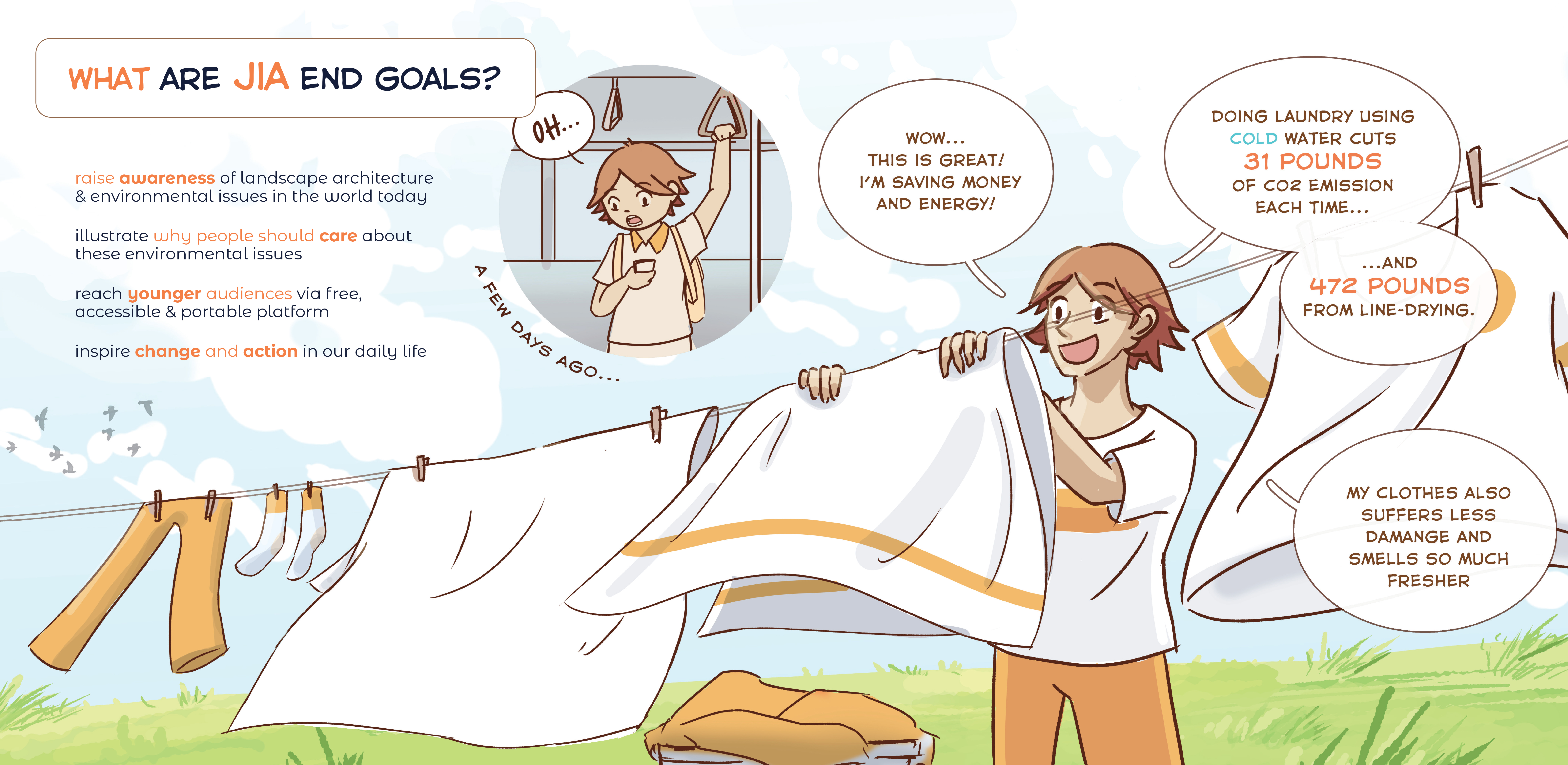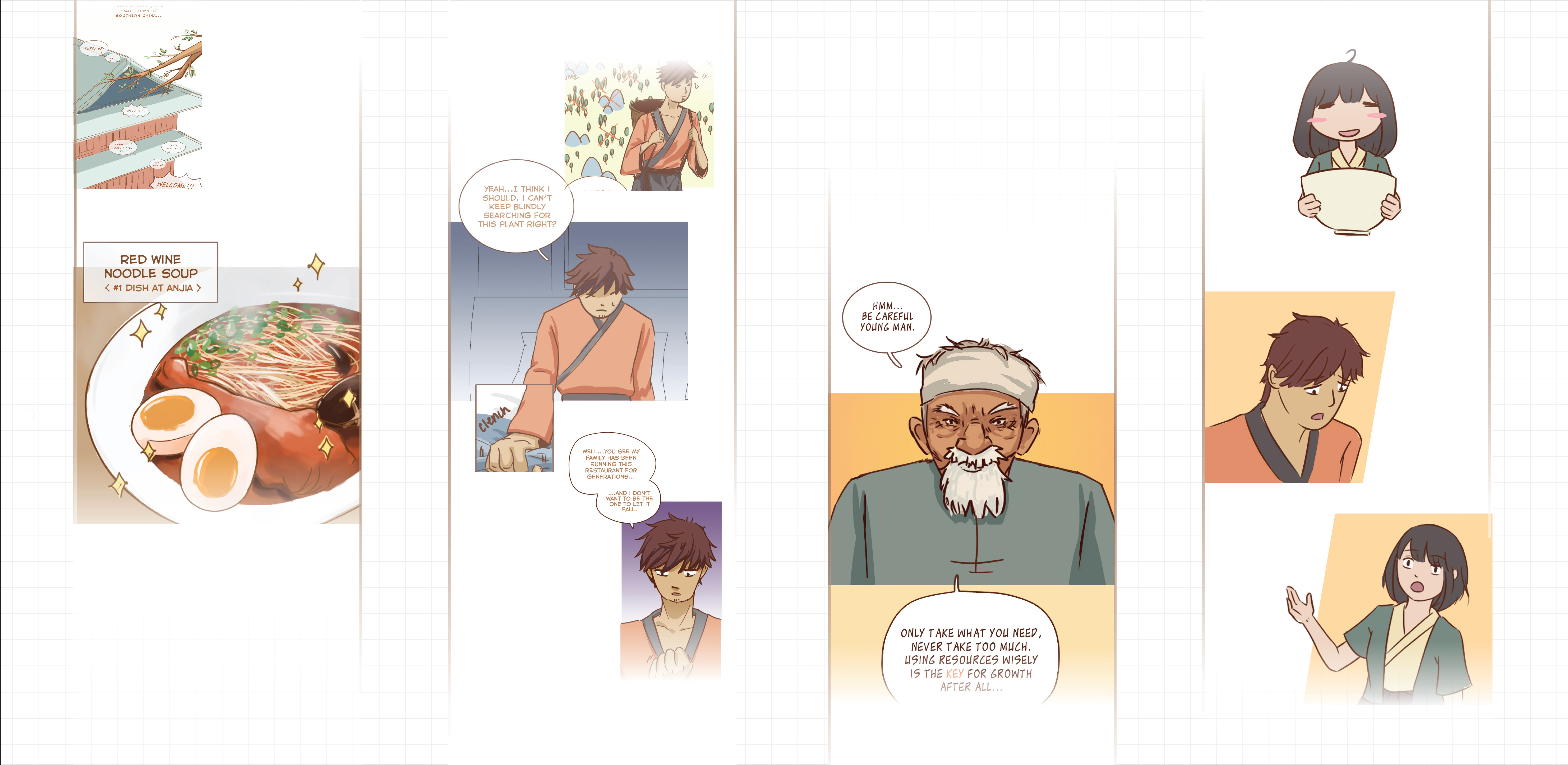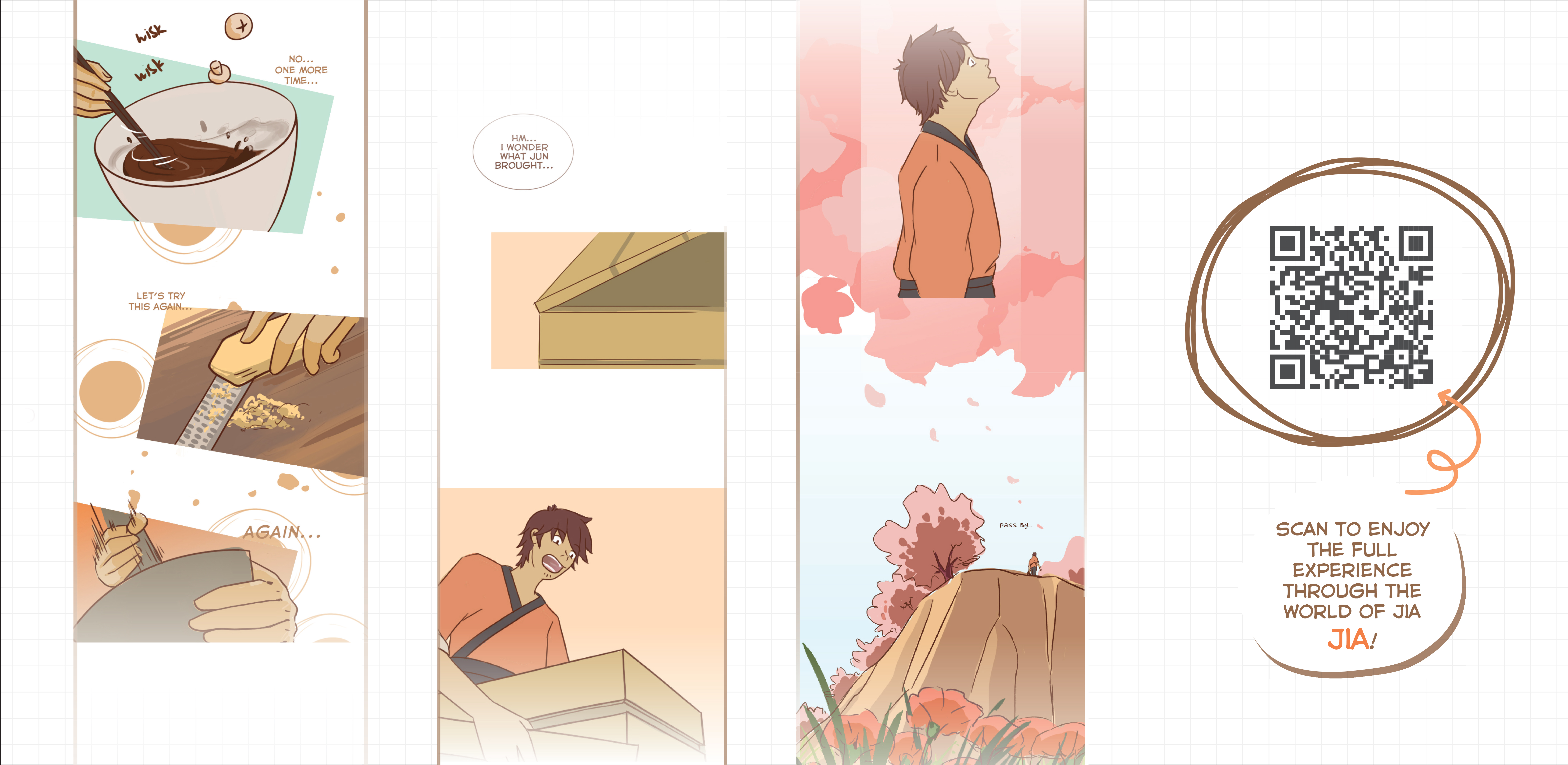Jia: Bringing Landscape Architecture to Webtoons
Award of Excellence
Communications
July Aung, Student ASLA
Faculty Advisors: César Torres-Bustamante
California Polytechnic State University, San Luis Obispo
A landscape architecture recruiting tool disguised as a richly illustrated story about food, this proposal stood out as the most innovative Communications submittal. A core principle of the discipline—conservation of resources—became the launch point for this clever narrative around a missing natural ingredient. The unconventional approach of a web-based cartoon allows dissemination of landscape advocacy beyond typical professional audiences, teaching ideas of sustainability and ecological impact in an easily digestible format. As if the story weren’t appetizing enough, the analysis behind it serves up pedagogy of how the cartoon was created based on analyses of existing comics, providing a clear template for others to recreate this webtoon’s success.
- 2020 Awards Jury
Project Statement
Jia is a story that raises awareness about the ever-evolving issues of sustainability, resource exhaustion, waste, conservation, and regeneration from the lens of a small family restaurant. It aims to teach readers that the little things that regular people do can contribute to making the environment a healthier place to live because they focus on ethical issues over personal and monetary interests.
As a webtoon, Jia is a vertical, linearly formatted cartoon designed to be read on smartphones, making it portable, accessible, and readily consumable by younger audiences all around the world. Heavily illustration and story-focused, the content is easily digestible and engages the reader through their interest in the conflict that the main character faces.
Through its story, Jia aims to let readers recognize growing issues in environmental sustainability and inspire them to take action in their own life. By combining entertainment and education, Jia's goal is to help people learn about the growing issues in Landscape Architecture in a fun, engaging way.
Project Narrative
Everyone enjoys stories — whether it’s action, fantasy, comedy, romance, or horror. That’s why many people love to stream movies online, go to theaters, or read books. On the other hand, many find learning from purely informative text cumbersome and tiring. But if education can integrate with entertainment, how great would that be? The content would be entertaining, engaging, and appealing for the audience, allowing them to learn something new and interesting about the world around them. That’s what Jia sets out to do, presenting its narrative and themes through webtoon format, hosted online.
Webtoon comes from the words “web” and “cartoon.” As its name suggests, it is a digital cartoon or comic that is intended to be read on phones or computers via the internet. Unlike printed comic books and manga which are read page-by-page, webtoons are long, vertical comic strips that take advantage of the infinite vertical canvas that digital media has to offer. Rather than reading it from left to right, up and down as comic books are formatted, readers intuitively scroll through the story top to bottom without any page breaks, keeping them immersed for the entire chapter. These webtoons are also often in color unlike its predecessors, and sometimes include atmospheric music and short animations. Taking full advantage of the online platform, webtoons have the ability to reach anyone at any time and place as long as they understand the language.
Jia is a webtoon about a small, family restaurant that is faced with a crisis caused by their previous treatment of the environment. Haazen, the protagonist, tries to save his restaurant, and as a result learns about the natural systems around him and how the overuse of an essential ingredient for his signature dish creates an environmental unbalance. The story addresses issues of sustainability, resources, waste, conservation, and regeneration-popular topics in contemporary Landscape Architecture.
Resource exhaustion is the primary conflict in Jia. As the main ingredient needed for a dish is depleted, Haazen tries to retain the dish’s traditional flavors with different ingredients. He leaves to seek help from an old man, a mentor, who provides him with direction and gives him some wisdom about the natural world: “Only take what you need, and never take too much. Using resources wisely is the key to steady growth.” These words serve as a warning to consume resources in a sustainable way and to respect the natural cycle. After many unsuccessful trials for finding a substitute for the plant, the solution to the restaurant’s dilemma is brought to Haazen by his long-time best friend Jun - to utilize fresh, seasonal harvest for the menu instead of only serving one menu. Seasonal ingredients are fresher, tastier, and cheaper; in addition, they are healthier and readily available. As a result, the customers are eventually satisfied with this change in the menu and the business prospers. Keeping the old man’s wisdom in mind, Haazen and his family continue to enforce sustainable practices at the restaurant, such as getting ingredients from local farmers, reducing food waste by using all the parts of fruits and vegetables in a creative way, allowing people to take leftovers home and composting. Through various means, Jia illustrates the practice of sustainable consumption and practices from the lens of a small family restaurant. Earth’s natural resources are diminishing as we speak, from living organisms to non-living resources, and thus there is a need for everyone to contribute to the solution.
Jia is born from my hobbies and my education in Landscape Architecture. I enjoy reading webtoons and mangas, which are the main driver for my passion for art and illustration. Meanwhile, Landscape Architecture broadened my view of the world around me beyond what I could learn otherwise. With the hope of spreading the knowledge that I have cultivated in Landscape Architecture, I envisioned creating a project that was fun yet educational.
One of the obstacles in the creation of Jia was finding the purpose of the story. With climate change as a hot topic in today’s world, sustainability and how people can practically implement it has become an important topic for the current generation of people. Rather than addressing the broad scope of sustainability, I decided to focus on one area: food. Food is an essential element that is relatable on a basic level. It supplies humans with energy and nutrients for their bodies to function on a daily basis. Various cultures have traditions of food to define them, making it an undeniable universal experience with people from all over the globe. However, food waste has become a big problem, especially in wealthier countries like the United States. According to the Food and Agriculture Organization of the United Nations and Love Food Hate Waste, “ An area larger than China is used to grow food that is never eaten” and “in most developed countries, over half of all food waste takes place in the home.” That’s a lot of food wasted, but everyone can contribute to the solution by being more responsible about the ingredients they utilize and throw away. Thus, the main subjects the narrative explores are food waste and resource consumption.
Landscape Architecture has very limited resources to cultivate the next generation of landscape architects, particularly materials to appeal to younger audiences like children’s books or graphic novels. There are a wide variety of illustrative books about the related field of Architecture for children of all ages, but I only found two about Landscape Architecture, both written and illustrated by Chip Sullivan. To gain more audience for the discipline, more resources are needed to engage the younger population so that they may grow up with a passion for Landscape Architecture, similar to how a child would want to grow up to be a singer, firefighter, or doctor. More people need to know about the growing field of Landscape Architecture, especially with evolving social and environmental issues around the world. Landscape architects have the tools and knowledge to contribute to the global environmental crisis around the world but the discipline isn’t well-known for such things. The growing threat to Landscape Architecture licensure in recent years indicates the failure of the U.S. government to recognize the discipline as a potential contributor to social and environmental initiatives. Thus, there is a need for engaging content for future generations that teaches them the importance of Landscape Architecture beyond pure design.
The end goal of Jia is to encourage young people to think differently about how they view the landscape. In addition, raise awareness about the issues relating to Landscape Architecture and inspire the readers to take action. Utilizing a story and illustration-driven application of webtoons will appeal to the younger crowds by feeding into the fast-paced culture that they grew up in. While formal textbooks and long articles are rich with information, they are tedious to read. However, by dividing the concepts into simpler terms through a simple narrative, it makes the subject matter relatable and consumable, and thus more appealing. The growing interest in Landscape Architecture and its evolving issues is necessary, especially with the growing awareness about how the changes in the climate may affect us more than we previously realized. More people need to know the presence of the discipline and the role it can play to contribute to the solution.
